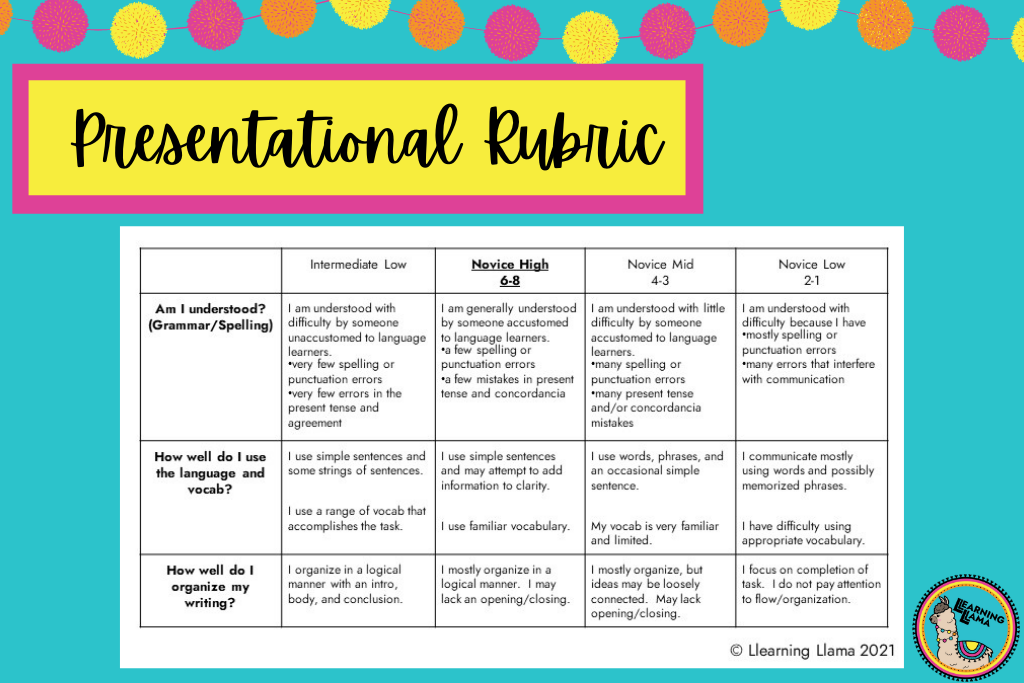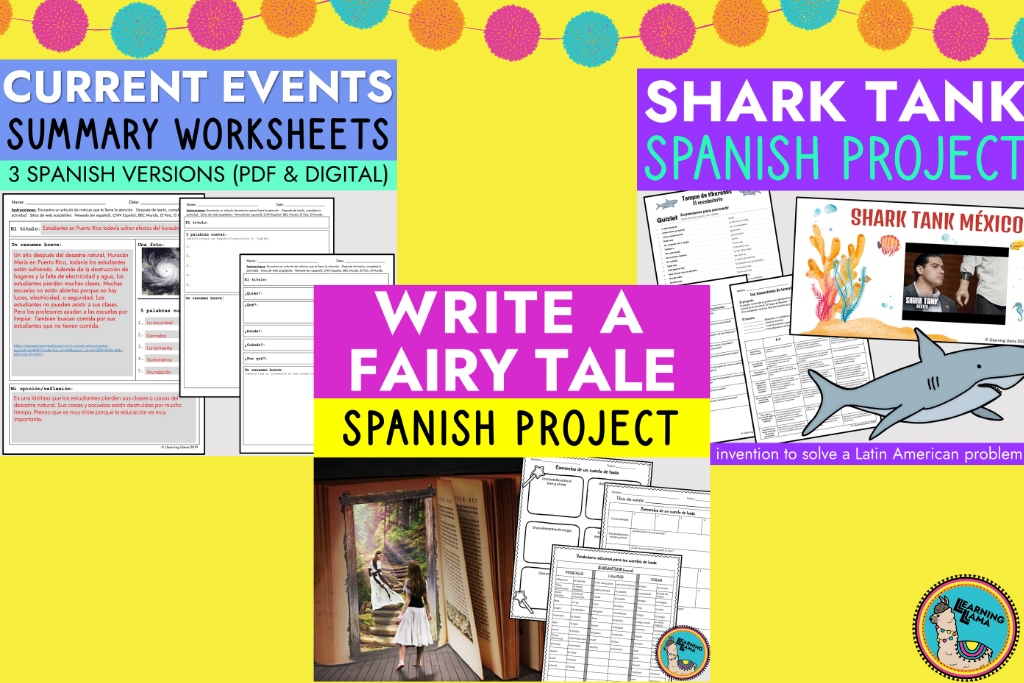Presentational communication is just one of the three modes of communication that world language teachers must teach and assess. We are also responsible for teaching interpretive and interpersonal communication skills. This is part 3 of the 5 part blog series on “The 3 Modes of Communication” where I explain in-depth each of the modes of communication and then how to combine all three into effective world language lessons.
What is presentational communication?
With presentational communication, students will either create one-way written or oral messages. This means that there is no opportunity for negotiation. They will “present” the material and not have the chance to interact with an audience.
How do I create a presentational task?
Create an authentic situation
Coming up with an authentic writing or speaking task can be challenging. How do we get novice students to produce a complete presentation? How do we assess a student’s proficiency in the past tense without having them just write what they did last weekend? Well, I’ve found that the more authentic an activity is, the more likely the students are to succeed and enjoy the process. So, the key is to make your presentational task authentic. That means, make it an activity that they would really do in the real-world.
Think back to your uses of the target language when studying abroad. Or even more generally… how do we communicate in the real world through writing and speaking? Think of your every day life. Where do you see “presentational communication”?
- Emails or letters to friends and family
- Reviews of a product, event, movie, book
- Poetry and short stories
- Business documents (brochures, flyers, advertisements)
- Formal presentations to sell an idea or product
- Teaching others how to do something/what something is
- A persuasive speech
- A podcast
Tie it into your content or curriculum
Now, you have to relate the task to your unit or curriculum. Always put yourself in the mindset that you are not in a “classroom.” Your students are in the real-world, using the language in real-life situations. Try to imagine what you would do or see when talking about your current theme. Here are some of my favorite presentational tasks related to various themes:
- Current Events/Global Challenges:
- Write a news article about current events
- Give a news broadcast on a current event
- Persuade your audience to support your global cause
- Family Life
- Write a fairy tale or children’s story
- Create a scrapbook on your childhood
- Science & Technology
- Create a new invention. Either design an ad or give a speech asking for funding like on Shark Tank.
- Identity and Personality
- Design a Wanted Poster for a character
- Create a Personality Quiz
- Create a social media profile for a character or person (Free Instagram template here!)
- Food & Healthy Eating
- Create a menu for a restaurant
- Write a daily food plan for healthy eating
- Clothing or Beauty & Aesthetics
- Make a clothing advertisement
- Put on a fashion show and describe what we are looking at
- Create a drawing or painting and write a description to hang near it at the museum
The Best Ways to Assess Presentational Communication
Use a rubric that reflects the ACTFL standards of your students’ proficiency levels: novice, intermediate, advanced. You want the rubric to have at least 3 different columns: approaching expectations, meets expectations, and exceeds expectations. This way students see what their goals are for future assignments and how they can improve in each aspect of presentational communication.
As you are reading or listening to their presentation, start making notes about their work. Don’t just circle a score on the rubric and call it a day. It is important that they get feedback on how to improve for next time AND positive feedback specifically about what they did well.
Categories to include on a presentational rubric:
- Understandable? Do the grammar and spelling make sense? Is it easy to understand despite errors?
- Language Use? Is there a wide range of vocabulary? Are sentences detailed and elaborate?
- Organization? Is there a clear introduction, body, and conclusion? Are there transition words?
- Additional Categories might include: persuasiveness, enthusiasm, creativity, etc. depending on the type of task assigned.

Bonus Tips for Presentational Communication
The presentational mode is writing AND speaking. Don’t limit yourself to just one. Assess both skills to have well-rounded Spanish students. Some students will thrive during writing assessments, and others during oral presentations. We need to aim for an equal amount of both types of presentational skills practice.
Keep the audience actively participating during speaking presentations. While presentations are occurring, the rest of the class should be held accountable for paying attention. Otherwise, it is like a free period to them, when you could be taking advantage of an easy interpretive activity! The students listening could be writing down positive aspects of the presentation or answering general comprehension questions. They could take notes and then write a summary or reflection at the end of all of the presentations.







3 Responses